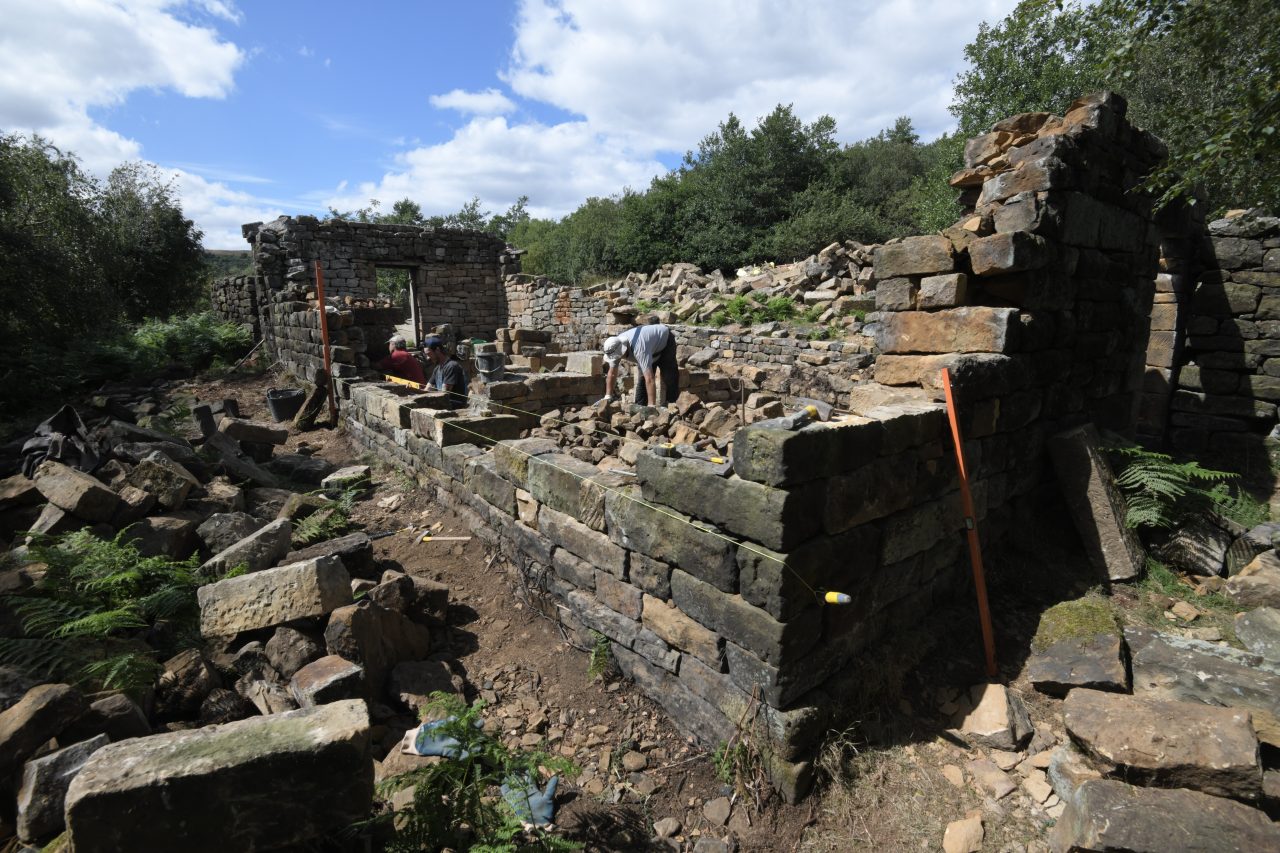ARTIST'S STATEMENT

The name Hanging Stones is derived from Hanging Stone Lane and Hanging Stone Farm in Northdale, near Rosedale Abbey – the location of the Hanging Stones project. Generally, my titles aspire to the status of a place name. Maps and the poetry of place names are an important literary source for me. Hanging Stones could already be a title for a work of mine (for instance I have a work at Yorkshire Sculpture Park called Hanging Trees.)
The name suggests precariousness – appropriate for a project that looks to re-establish derelict and semi-derelict buildings in order to give them new purpose, thus arresting their inevitable slide into disrepair and in some cases imminent collapse.
Northdale is wild but it is not wilderness. It bears the evidence of an industrial past – it is a complex, tough, resilient and powerful landscape with a strong human presence. There is hardly a blade of grass that does not some way reflect the human hand, and yet Northdale is a place in which nature is strong in terms of both its landscape and the people who have worked there.
I have tried to see something that is in some ways already there – I like the discipline of working within an existing framework. It is the valley itself, not me, that has set the terms of engagement and created my rationale for Hanging Stones. The buildings set the pace and rhythm for Hanging Stones.
Apart from Redwall, I have chosen existing buildings (or in the case of Northdale Head the place where a building once stood), because they are places that have the imprint of the people who have been before. All the buildings are currently unused.
There is no such thing as a permanent ruin. Unless maintenance of some kind is undertaken (and I am not suggesting that it should) a ruin will continue to collapse until it becomes an overgrown footprint. Aside from collapsing, stone has always been taken from old buildings to be used in the making of new structures. Northdale Head House is an extreme example of a building that has been completely removed, but others gradually disappear over time. Buildings do not stand still once they have no purpose.
The issue is not whether a ruin is better off left alone, but what form it will take next. My own personal belief is that there is time enough for a building to become ruinous again and the prospect of being rebuilt as an artwork would not be an uninteresting layer in a building’s history. The rebuilding of four ruins (and five derelict buildings) represents a tiny percentage of the many buildings in a similar condition within the North Yorks Moors National Park.
Art is by its very nature outside of the normal. It reflects the unique and the deeply personal view of an individual. Art does not conform. It is an exception. Hanging Stones should be not seen as setting precedents for rebuilding all old buildings as art works, or for any other purpose, elsewhere.
The repair of a building is for me an act of renewal and not of ‘developer’, and this notion of renewal is an important dimension of my earning or having the right to remake the building as a work of art.
The old buildings were originally made from need. Need is important. I need the buildings not just to provide a site, but to give the reason for making the art itself. Each proposal has come out of my dialogue with the landscape, as well as each building and the people who once lived and worked there.
The inside of each house should be as raw as the outside. Indeed, one of the many rationales for working with buildings is that sound, atmosphere and materials are amplified when experienced inside a confined space. None of the buildings will have electricity or mains water.
Wherever possible, stone from the old building is used for its repair or renovation. The use of already worked stones is a way for me to connect with the people who first made the buildings. The resonance with those who have gone before is important and is made more poignant by the fact that I am making spaces to be occupied by people to come.
Whilst Hanging Stones would be connected to the past, it would also be a contemporary work of art that addresses our relationship with the landscape today. It would be very much about the future. The kind of life that Hanging Stones will have would depend upon people – not as spectators but as participants in a work.
The walk is an integral part of Hanging Stones – the artery by which people will give life to the buildings. The patina of hand and footprints left inside and out of the buildings by those who visit them and make the walk will add richness to the project.
The buildings will only be accessed with a key, which people will pick up from and return to a designated location. People will be given the responsibility of opening and closing the buildings. The number of visitors will be determined by the time and space to experience the buildings properly as well as minimizing any impact on the artworks, the valley and nearby village of Rosedale Abbey.
Hanging Stones will be both discreet and dramatic. Visible to those who know it is there and hidden to those that don’t. It will be so rooted in what is already there that it would be difficult to say where the work begins or ends.
Andy Goldsworthy, 2018